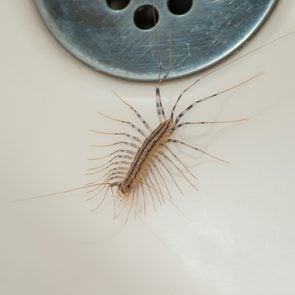If You Think Your House Pests Are a Problem, Try Living in Australia

In the Land Down Under, not even dancing can keep the creepy-crawlies at bay.
My exercise regimen now includes 40minutes of vigorous dance in the kitchen just before bedtime. I leap into the air like a youthful Nureyev, performing a grand jeté to the left and then one to the right. Next it’s tap work, madly stamping the ground like a frenzied Fred Astaire.
The cause is a double insect infestation. Pantry moths fill the air; cockroaches scurry across every surface. Both are common here in Australia, particularly during the hot summer months. I am determined to win my battle against them.
I say the cockroaches “scurry,” but that’s not the right word. Rather, it’s a brisk, purposeful walk. They have no fear; they own this place. From the dignified manner of their perambulation, I assume they’ve already contacted my bank and taken over the mortgage.
I have tried traps, of course, which the cockroaches regard as mobile housing, dotted around the place for their convenience. I have tried insecticide, which has a worse effect on me than on them. There are so many cockroaches, I wonder if they’d mind fetching my asthma puffer from my bedroom drawer before I spray.
More recently, I’ve considered contacting Kim Jong-un and arranging a nuclear strike, but I’ve heard cockroaches can survive that, as well. The pantry moths are similarly oblivious to all the products that promise their eradication. Chief among them is the moth trap—essentially a sheet of sticky paper impregnated with female pheromones. It’s like an insect version of a nightclub.
The problem: While it works on 95 percent of the males, the ones that survive and breed with the females are, of course, the strongest ones. My pantry is now home to accelerated evolution. Wait three weeks and the moths will be the size of bats. Wait three months and you’ll open the door to be greeted by the dragons from Game of Thrones. And so I’m left with my leaping and stomping dance routine. I pluck the pantry moths from the air with my bare hands; the cockroaches I dispatch with my feet.
For reasons that are unclear, the insect infestation is my fault. Or at least my responsibility. “It’s repulsive,” says my wife, Jocasta. “When are you going to do something about it?”
What she means is: “When are you going to hire a real man to solve the problem?”
In fact, I’ve already called a real man, a professional pest controller, only to be told a visit will cost $365. It’s a figure that instantly brought new energy to my dance moves. I’m now more like Mikhail Baryshnikov with a side order of Jackie Chan, leaping from one side of the kitchen to another, a flying machine of death. I go to bed each night panting with exhaustion and calculating the bugs’ nightly losses against the breeding that will inevitably occur overnight.
Female cockroaches can produce eight egg capsules in a lifetime, each holding as many as 40 eggs. How many is that? Just multiply eight and 40 and you’ll get the answer: Eww!
Actually, that’s nothing compared to a female pantry moth, which lays 400 eggs at a time. They take as little as seven days to hatch. This is too much, even for Baryshnikov. I’ll need a whole corps de ballet.
Apparently the pantry moth smuggles itself into your home through your shopping, so by freezing all your dry goods, you can kill off the eggs. Not so practical, though. Worse, who knew that flour, rice, almond meal and the rest of it are full of moth eggs? I never want to eat anything ever again.
The only thing I can do is wait. Maybe Kim Jong-un will destroy all life on the planet, proving science wrong by killing the cockroaches, too. Or maybe I’ll get over my reluctance to spend $365.
That’s unlikely. So wish me luck.
Next, read Richard’s hilarious take on housekeeping as a fitness regimen.






